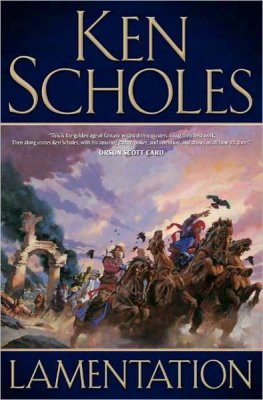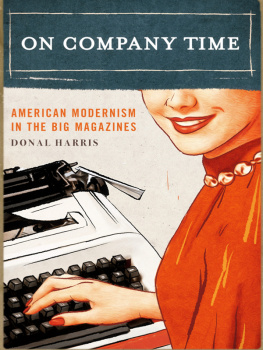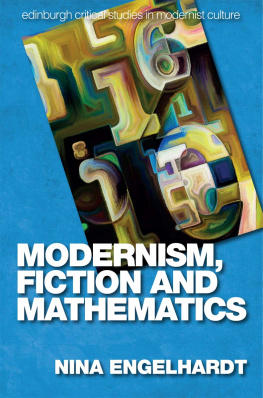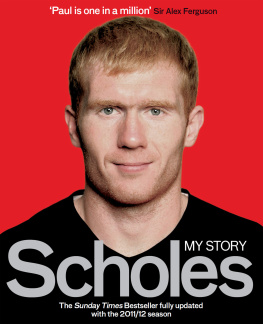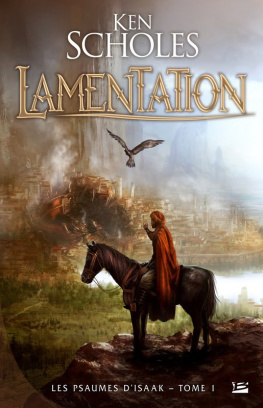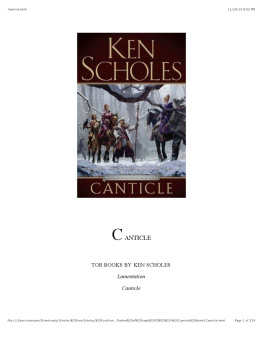Robert Scholes - Modernism in the Magazines
Here you can read online Robert Scholes - Modernism in the Magazines full text of the book (entire story) in english for free. Download pdf and epub, get meaning, cover and reviews about this ebook. year: 2010, publisher: YaleUP, genre: Science. Description of the work, (preface) as well as reviews are available. Best literature library LitArk.com created for fans of good reading and offers a wide selection of genres:
Romance novel
Science fiction
Adventure
Detective
Science
History
Home and family
Prose
Art
Politics
Computer
Non-fiction
Religion
Business
Children
Humor
Choose a favorite category and find really read worthwhile books. Enjoy immersion in the world of imagination, feel the emotions of the characters or learn something new for yourself, make an fascinating discovery.
- Book:Modernism in the Magazines
- Author:
- Publisher:YaleUP
- Genre:
- Year:2010
- Rating:3 / 5
- Favourites:Add to favourites
- Your mark:
- 60
- 1
- 2
- 3
- 4
- 5
Modernism in the Magazines: summary, description and annotation
We offer to read an annotation, description, summary or preface (depends on what the author of the book "Modernism in the Magazines" wrote himself). If you haven't found the necessary information about the book — write in the comments, we will try to find it.
Modernism in the Magazines — read online for free the complete book (whole text) full work
Below is the text of the book, divided by pages. System saving the place of the last page read, allows you to conveniently read the book "Modernism in the Magazines" online for free, without having to search again every time where you left off. Put a bookmark, and you can go to the page where you finished reading at any time.
Font size:
Interval:
Bookmark:
the Magazines
the Magazines
ROBERT SCHOLES
CLIFFORD WULFMAN
Yale
UNIVERSITY PRESS
New Haven and London
To the librarians and archivists who preserved the
magazines we discuss in this book.
Copyright 2010 by Yale University. All rights reserved.
This book may not be reproduced, in whole or in part,
including illustrations, in any form (beyond that copying
permitted by Sections 107 and 108 of the U.S. Copyright Law
and except by reviewers for the public press), without written
permission from the publishers.
Yale University Press books may be purchased in quantity
for educational, business, or promotional use. For
information, please e-mail (U.S. office)
or (U.K. office).
Set in Minion type by The Composing Room of Michigan, Inc.
Printed in the United States of America.
Library of Congress Cataloging-in-Publication Data
Scholes, Robert.
Modernism in the magazines : an introduction / Robert Scholes and Clifford Wulfman.
p. cm.
Includes bibliographical references and index.
ISBN 978-0-300-14204-4 (cloth : alk. paper) 1. Little
magazinesPublishingUnited StatesHistory20th
century. 2. Little magazinesPublishingGreat Britain
History20th century. 3. Modernism (Literature)United
States. 4. Modernism (Literature)Great Britain.
5. Pound, Ezra, 18851972KnowledgePeriodicals.
I. Wulfman, Clifford. II. Title.
PN4878.3.S36 2010
051dc22
2009046314
A catalogue record for this book is available from the
British Library.
This paper meets the requirements of ANSI/NISO
Z39.48-1992 (Permanence of Paper).
10 9 8 7 6 5 4 3 2 1
Preface
We have called this book an introduction because we intend it to be just that. It is aimed mainly at two distinct but connected audiences: (1) scholars of modernism who may wish to use periodicals as a way of helping their students enter the world of modern culture and the print media that shaped it, and (2) students and young scholars who are beginning to find their way around the world of modernity and modernism and are looking for projects that will lead them deeper into that world. With this in mind, we have tried to provide (in ) a summary of the background of modernist studies that seasoned scholars may not need for themselves but may find useful for their students. (And such scholars can always correct what they believe we have gotten wrong.) We have also tried to open up the way into modernist periodical studies by doing several things:
- situating as a pioneer in this field Ezra Pound, who both helped to create many elite modernist magazines and also provided a model of one way to study and criticize modern periodical culture;
- considering modernism as a response to the social and cultural conditions of modernity and to previous modes of art and literature;
- examining the contents of modernist magazines, including the roles of visual art and advertising in those magazines;
- studying the ways in which these magazines have been classified and categorized in the past, and proposing other methods of organizing information about these periodicals;
- offering methods and examples of how to read and study individual journals and groups of related magazines;
- examining the archival situation of modernist periodicals, including the hole in the archive, and looking closely at the role of digital technology in preserving and studying those periodicals;
- including as an appendix Ezra Pounds pioneering series of articles on the magazines of 1917 and 1918.
As you will see, Ezra Pound is a thread that runs through all of these efforts. This did not happen because we loved him. The anti-Semitism and support for fascism he displayed from 1936 on have not endeared him to many people. But the Pound of the first three decades of the twentieth century was a different figure: a brilliant and indefatigable supporter of other writers and artists, a talented and learned poet, and a literary and cultural critic of enormous energy and biting wit. He shaped modernism in two ways. First, he arranged for the publication of work by other writers in magazines and books, and he helped visual artists publicize and sell their work. Time has confirmed most of his judgments about which writers and artists were doing work of lasting value. Second, through his critical writings in magazines and books he shaped the perception of modernism that came to be accepted by several generations of teachers and their students. Quite simply, he had more to do with our present understanding of modernism than any other individual. He was a pioneer of comparative literary studies, of cultural studies, and of periodical studies in the academic world, though he often professed to despise that world, which had rejected him. However one may rank his creative achievement as a poet, one must put him at the very top as an impresario and propagandist for the view of modernism that prevailed in the English-speaking world.
The other thing we want to say in this brief preface is that our exemplary and technical studies are not meant to be definitive. We are trying to open the way for others rather than close it down by covering all the bases and solving all the puzzles. There is much to be done, by scholars, teachers, and students of modernism, using the periodical resources that are only now becoming available to us through digital technology. This book is meant to be an invitation and a help in getting started: in short, an introduction.
We would like to thank the people who helped us in our work. Our MJP colleagues Mark Gaipa and Sean Latham read early versions and made useful suggestions, and two anonymous readers for Yale University Press did the same. We are especially grateful to the one who said that our fourth chapter was the weakest, which led to a total rewriting of that chapter. And we want to thank Stephen Ferguson, Curator of Rare Books at Princeton, who helped when help was needed, and Jennifer Kinnear, for permission from the Perth and Kinross Council to use an image of J. D. Fergussons Rhythm in this book. We also thank Alison MacKeen and Dan Heaton of Yale University Press for editorial assistance.
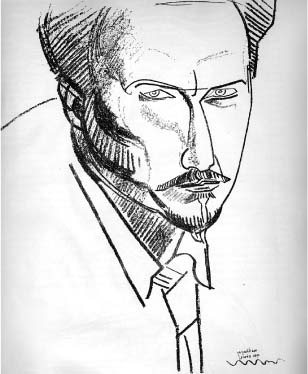
Fig. 1.1. Drawing of Ezra Pound by Wyndham Lewis, 1919. The Apple (of Beauty and Discord), April 1920, 97
Modern Periodical Studies
I am doing a series of satires on English Magazines, and it is a fairly amusing lark, I dont know whether the solemn quarterlies or the popular weeklies are the more ludicrous.
Ezra Pound, Pound/Joyce
I had intended to provide the book derisively with an appendix, vermiform. Papa Flaubert compiled a sottisier, I also compiled a sottisier. I do not yield a jot in my belief that such compilations are useful, I concede that there may be no need of reprinting mine at this moment. At any rate the snippets are there on file. You cant know an era merely by knowing its best.
Ezra Pound, Make It New
Never yet got any attention to Studies in Contemporary Mentality (yu prob/bombadeering at time) anyhow tellin the goddam Brits wot was pizinem via print on noose-stands. Even the O. M. [T. S. Eliot] cdnt see the utility, when I tried for a reprint in volumette, and now lookat their goddam hempire.
Ezra Pound, Pound/Lewis
T he three epigraphs to this chapter are from different moments in Ezra Pounds career, but they refer to the same text. In the source of the first, he was writing to James Joyce, in September 1917, about a series of twenty articles called Studies in Contemporary Mentality that appeared in
Font size:
Interval:
Bookmark:
Similar books «Modernism in the Magazines»
Look at similar books to Modernism in the Magazines. We have selected literature similar in name and meaning in the hope of providing readers with more options to find new, interesting, not yet read works.
Discussion, reviews of the book Modernism in the Magazines and just readers' own opinions. Leave your comments, write what you think about the work, its meaning or the main characters. Specify what exactly you liked and what you didn't like, and why you think so.



